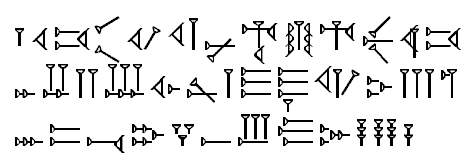The people of Ugarit were the Canaanites, precursors to the Phoenicians. They were perhaps the first to recognize that human speech consists of only a finite number of atomic sounds and all that was really needed was a symbol for each. They devised 30 symbols from which the alphabets of all phonetic languages are derived (yes all: Hebrew, Latin, Sanskrit, Aramaic, Arabic, Greek, etc.). As a result, writing opened up and scribal power reduced; any child (or foreigner) could now easily learn to read and write. This may sound simple but it took nearly two millennia to arrive at it ... the Greeks got their alphabet from the Phoenicians. The names of most letters in the Greek/Phoenician alphabets are clearly related - alpha/aleph (ox), beta/bet (house), gamma/gimel (camel), delta/dalet (door), etc. Notably, the Ugaritic alphabet only had consonants - the pre-Homeric Greeks added the vowels.
Ugarit was an independent kingdom from the 18th century BCE. Its military and economic history has been revealed by the tablets found in the palace archives. The Canaanites had a golden age from about 1450 to 1200 BCE; it produced great royal palaces, temples and shrines, a high priests' library and other libraries on the acropolis. With their strong ships built of the cedars on the mountains of Lebanon, they became the greatest naval power of the age and knew many key principles of navigation. They traded textiles, ivory, weapons and silver with the cities of the Mediterranean, Mesopotamia, Aegean Sea, Egypt and Asia Minor. Around 1200 BCE, Ugarit likely fell prey to the invasion of Philistines, northern tribes sometimes called the Sea Peoples. But other possibilities like a big earthquake, a famine or a massive fire have not been ruled out. Its population then was likely under 10,000 ... ( more )
Designed in collaboration with Vitalect, Inc. All rights reserved. |



















